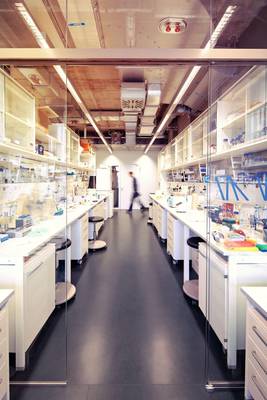Composition of rubber ESD flooring
Rubber flooring (normal and conductive or ESD) is made of:
- natural and/or synthetic rubber
- reinforcing mineral fillers (for example clay)
- natural colour pigments
Natural rubber is known to be obtained by cutting a rubber tree, from which white milk (latex) flows out. Synthetic rubber is primarily made from petroleum by-products and can have various compositions, but chemically it is always an elastic polymer.
How do conductive floors work?
Protection against electrostatic discharges is ensured in rubber ESD flooring in two ways: on the one hand by a special conductive covering, and on the other hand by the appropriate method of installation – all with the aim of reducing or dissipating any electrostatic charges that may arise in a given environment.
Conductive floor covering – must comply with the standards that are set for the room, usually from the special ESD series, which are made for this purpose
Method of installation – the conductive floor covering is then installed with special conductive adhesives and earthing systems (copper strips)
Where to lay ESD floors?
The occurrence of even the slightest discharge of static electricity must be prevented, especially where it could damage sensitive electronic devices. Typically, these include electronic component plants, data centres, or a variety of laboratories – wherever static electricity could cause irreversible damage.
Artigo antistatic flooring
Our Italian supplier Artigo has a number of special conductive flooring types in its range. They have a slightly structured surface, as if hammered, and a multi-coloured infill – there are 7 colours to choose from. Even with different formats (rolls, squares) and thickness (2-3.5 mm), the coverings meet the same parameters for use in rooms with the need to install conductive floors.
Book a consultation with us in the showroom at Prague's Flora and get advice and see all samples of Artigo conductive rubber flooring in person.












